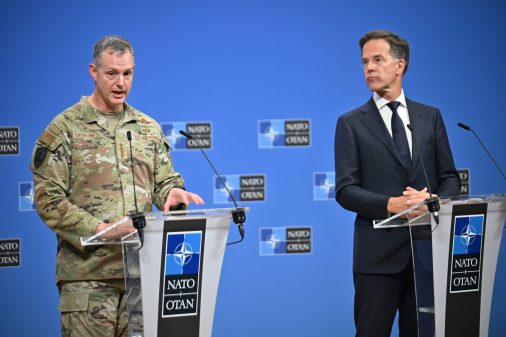Looking to deter Russia, lawmakers seek to prioritize defense cooperation on NATO’s eastern flank

Rep. Joe Wilson, R-S.C., proposed legislation that would set a clear U.S. government policy to prioritize military and security collaboration with allies across NATO’s eastern flank.
The seven-page bill, not yet published widely but shared with DefenseScoop on Monday, was motivated by multiple recent incidents where Russian drones and military jets reportedly violated some of those bordering nations’ airspace.
“Congressman Wilson is leading this legislation to support our NATO allies after numerous air incursions,” a senior official on the lawmaker’s team told DefenseScoop.
NATO’s eastern flank extends from the Baltic Sea in the north to the Black Sea in the south. Wilson’s legislation calls out Bulgaria, Estonia, Finland, Hungary, Latvia, Lithuania, Poland, Romania, and Slovakia as explicit member states.
“Those NATO allies are on the frontline of deterring and defending against threats from Russia and Belarus, and require continued United States coordination, defense cooperation, and security assistance,” the bill states.
The legislation, which is co-sponsored by Rep. Steve Cohen, D-Tenn., and has a companion bill in the Senate, would mandate the Departments of Defense and State to prioritize those nations under existing authorities — including Foreign Military Financing, Section 333 (or Authority to Build Partner Capacity), Excess Defense Articles, and War Reserve Stocks for Allies.
The lawmakers also direct the secretaries of those departments to provide briefings within 180 days of the bill’s enactment on their implementation efforts, and to supply details regarding “timelines, goals, and cooperative mechanisms.”
Following its introduction, the new “Eastern Flank Strategic Partnership Act of 2025” was referred to the House Committees on Foreign Affairs and Armed Services for review.
Notably, since Russia’s full-scale invasion of Ukraine in 2022, America and its allies and partners have increasingly surged ships, aircraft and troops to NATO territory in eastern and south-eastern Europe to enforce deterrence. Russia has simultaneously been escalating its military presence in and around the eastern flank.
In recent months, several countries that border Russia, including Poland and Estonia, reported separate events that involved their militaries having to scramble to intercept what they identified as Russian aircraft.
Russian President Vladimir Putin reportedly dismissed accusations associated with the attacks.
But in their aftermath, NATO Secretary General Mark Rutte and Supreme Allied Commander Europe Gen. Alex Grynkewich announced plans for the Eastern Sentry military activity to strengthen the alliance’s posture in the east — and transatlantic security, more broadly — particularly through surging weapons and other assets.






